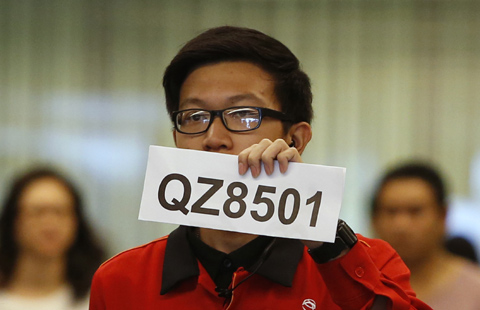Missing AirAsia plane could be at 'bottom of sea'
Updated: 2014-12-29 13:16
(Agencies)
|
||||||||
MULTINATIONAL SEARCH
Indonesian Air Force spokesman Hadi Thahjanto said two C-130 Hercules planes were focusing the search for Flight QZ8501 in areas northeast of Indonesia's Bangka island, which lies roughly halfway between Surabaya and Singapore, in the Java Sea.
An Australian P3 Orion surveillance plane had joined the search, the Australian Defence Department said.
Singapore said it had sent two navy ships to help, while Malaysia said it would send three naval vessels and a C-130.
China also offered to send aircraft and ships to help in the search, as well as any other assistance Indonesia needed.
Soelistyo said Indonesia might not have the best technology to search underwater and had accepted offers of help from the United States, Britain and France.
"An underwater search is not easy based on experience,"Soelistyo said, referring to the months it took Indonesia torecover flight data recorders from a Boeing 737-400 operated by Indonesia's Adam Air which crashed off Sulawesi island in 2007,killing all 102 people on board.
Flight QZ8501 was travelling at 32,000 feet above the JavaSea and had asked to fly at 38,000 feet to avoid clouds, saidJoko Muryo Atmodjo, air transportation director at Indonesia's transport ministry.
Permission was not given at the time due to traffic in thearea. Five minutes later, at 6:17 a.m. on Sunday (2317 GMT Saturday), the plane lost contact with air traffic control, Atmodjo said.
Data from Flightradar24.com, which tracks airline flights inreal time, showed several nearby aircraft were at altitudes ranging from 34,000 to 36,000 feet at the time, levels that arenot unusual for cruising aircraft.
Pilots and aviation experts said thunderstorms, and requeststo gain altitude to avoid them, were not unusual in the area where the flight disappeared.
"You can climb to push above the cloud layer to get clearance and radar readings to pick your way over the storm,"said a Qantas Airways pilot with 25 years experience flying inthe region.
"But the airplane's performance is directly related to the temperature outside and increasing altitude can lead to freezing of the static radar, giving pilots an erroneous radar reading."
The resulting danger is that pilots take incorrect action tocontrol the aircraft, said the pilot, who requested anonymity because he was not authorized to speak on the record.

 Missing AirAsia plane maybe at sea bottom
Missing AirAsia plane maybe at sea bottom
 Yearender: Best selling Chinese films in 2014
Yearender: Best selling Chinese films in 2014
 Top 10 policy changes of China in 2014
Top 10 policy changes of China in 2014
 Families of MH370's passengers still hold out hope
Families of MH370's passengers still hold out hope
 SCH chairman sees bright future in Brazil
SCH chairman sees bright future in Brazil
 Where did you go flight QZ8501
Where did you go flight QZ8501
 Trending across China: Never too old to learn
Trending across China: Never too old to learn
 Cartoons capture 10 major China stories of 2014
Cartoons capture 10 major China stories of 2014
Most Viewed
Editor's Picks

|

|

|

|

|

|
Today's Top News
The Interview gets mixed views
Harvard students seek meaty profits from alpaca
Funeral set for Officer Wenjian Liu
China offers to help in search for missing AirAsia flight
AirAsia plane has tire problem in Philippines
Missing AirAsia plane could be at 'bottom of sea'
Deals planned to recover illegal assets from abroad
Parents seeking advantages send kids to US schools while young
US Weekly

|

|








